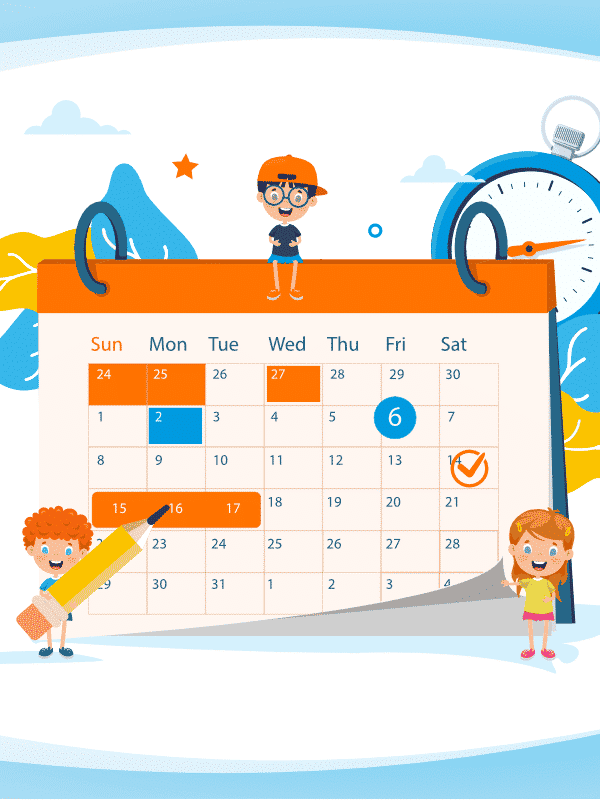At TruFluency Kids, we work with families who want their children to become bilingual in English and Spanish. Now you might imagine that these families are made up entirely of native English speakers, but that’s not the case. Even families in which at least one parent is bilingual and speaks Spanish to the kids at home can benefit from some extra language-learning support.
What should you do, though, if you speak Spanish and your kids’ other parent (or another significant person who’s part of your daily life) doesn’t? Will your partner feel left out when you speak to your children in Spanish? Is this going to create weird dynamics in your family?
I’ve heard these questions a lot, so today I want to both ease your mind and give you some practical strategies to support both your language-learning goals for your kids and your important relationships.
I’ll be drawing from what I’ve learned not only as the founder of TruFluency Kids, but also as the mom of a 3-year-old daughter whom I’m raising to speak English, Spanish and French.
I don’t have a full-time partner, but I do have experience dating and sharing a life with someone during my daughter’s early years. And it’s not easy! I am also the only one who speaks a language other than English to my daughter when we’re around family — which we are a lot.
While I’m focusing on Spanish in this article, since that’s the language we teach at TruFluency Kids, these strategies apply to any target language. (In fact, the language I speak to my daughter is French, while her nanny speaks to her exclusively in Spanish.) They’re also relevant for all kinds of relationships — a spouse or partner, a grandparent who lives with you, you name it.
Start With an Open Conversation
So what’s the first thing you should do if you want to speak to your child in Spanish, but your partner doesn’t speak the language? Communicate! Have a sit-down talk with them about why helping your child become bilingual is so important to you, as well as how speaking Spanish will be a great advantage for your child. You might even want to share some of our articles about the benefits of bilingualism with them.
As you talk, be willing to hear your partner’s questions and concerns. When I first told my family about my language goals for my daughter, they were afraid she would not be able to communicate with them in English. Which is a valid concern!
I explained that since the world around us speaks English, my friends mainly speak English, and my family only speaks English, that my daughter will most definitely be a native English speaker. After my daughter started talking, they quickly realized that she would speak English just fine.
Create a Practical Plan for Your Spanish-Speaking Home
The next step is visualizing together just how things are going to work in your bilingual home. Think about different situations in which you and your kids will be speaking Spanish together while your partner is around. This is going to bring up a lot of questions:
- Will you translate every sentence again in English for your partner? (I don’t suggest this.)
- Will you translate the important sentences that need to be understood by everyone in the room? (I often do this.)
- Will your kids tell you stories about their day in both Spanish and English?
- How will you handle conversations during family meals? (You may want to use a language that everyone understands when you’re seated around the table together.)
Give Your Child the Gift of Spanish!
Remember to Check-in Regularly
After your initial conversation, keep checking in regularly with your partner. It’s natural for them to experience a variety of emotions — from frustration at not understanding Spanish conversations to excitement about helping your kids learn the language. And those emotions can change over time.
There’s no way either of you could plan what to do, or know how you’ll react, in every situation. So keep the lines of communication open, and be willing to make adjustments.
Take the Next Step in Your Child’s Spanish Journey
No matter how much Spanish you and your partner do — or don’t — speak, TruFluency Kids Spanish immersion classes could be a great fit for your family.
We teach Spanish through fun activities like singing, playing games, reading, doing crafts and cooking. We also encourage students to speak Spanish in every class, so they get plenty of conversation practice — the true secret to fluency. We even give you Spanish questions and phrases you can use to spark conversations with your kids at home.
Intrigued? Sign your kids up for a trial class now. It’s very personalized, because there are no more than six students per trial. After the trial class, join a parent Q & A to learn more.


